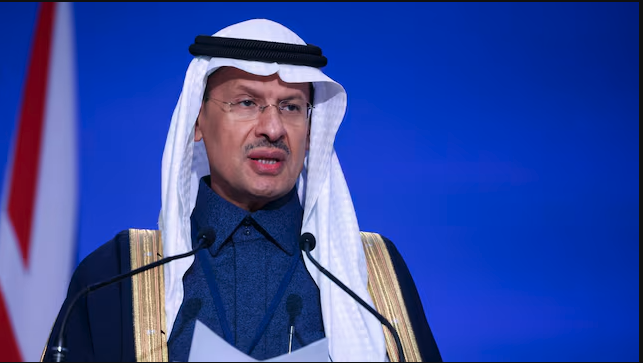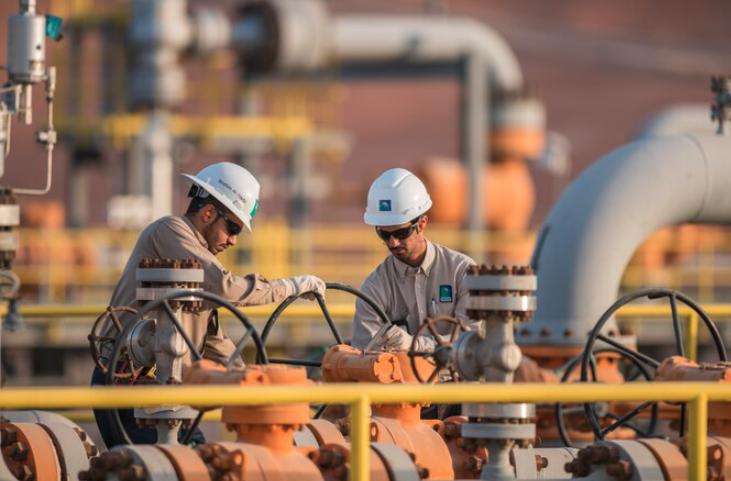RIYADH: The range of new energy technologies under development globally is broader and appears more promising than ever before, according to a prominent think tank.
In its latest report, the International Energy Agency said that the modern energy technology landscape is highly dynamic, with both emerging and established economies contributing to the growth of innovation in the sector.
The analysis from the IEA comes at a time when countries including Saudi Arabia are actively pursuing advanced technology in the sector, as the Kingdom is trying to diversify its energy mix through renewables and nuclear power.
“Innovation is the lifeblood of the energy sector, particularly in today’s fast-moving times with the global energy mix shifting and major trends such as electrification having far-reaching effects,” said Fatih Birol, executive director of the IEA.
He added: “A wide range of technologies now appears to be coming close to market, offering hope for improvements in energy security, affordability and sustainability over the long term.”
The energy agency further said that the global energy innovation landscape is at a pivotal moment amid signs of slowing momentum in financing and shifting priorities.
“We require investment, both public and private, to scale up innovative solutions. The payback may not always be quick, but it will be lasting,” said Birol.
R&D in energy innovation
According to the IEA, energy innovation has delivered major economic and security benefits worldwide.
Public research and development investments in response to energy crises in the 1970s, reaching 0.1 percent of the gross domestic product, drove the expansion of nuclear power and reduced many countries’ reliance on imported fuels.
Nuclear is set to form a key part of Saudi Arabia’s energy mix, and in January the Kingdom’s Energy Minister Prince Abdulaziz bin Salman also said that the nation is planning to begin enriching and selling uranium.
Launched in 2017, Saudi Arabia’s National Atomic Energy Project is a cornerstone of the Kingdom’s strategy to diversify its energy sources and reduce its dependence on fossil fuels.

Saudi Energy Minister Prince Abdulaziz bin Salman. File/Reuters
An additional report by the IEA in January projected that annual investments in the nuclear energy development sector would need to double to $120 billion by the end of this decade to meet the rising demand for infrastructure development.
The initiative aims to integrate nuclear power into the national energy mix, enhancing sustainability and fulfilling international commitments.
In its latest report, the energy agency added that energy R&D spending has risen at around 6 percent per year in real terms, with direct government funding across the world up again in 2024, above the $50 billion of the previous year — although the rate of increase has slowed.
“Initial indications of spending in 2024 in the United States and Canada suggest flatter year-on-year growth, balanced by larger increases in Japan and Norway,” said the IEA.
Regarding other major innovative developments, the IEA said that technological advancements in batteries and electric vehicles have lowered oil import needs in China, while shale technology innovation transformed the US from an energy importer to a net exporter.
“The impacts of energy technology innovation are also visible at the level of trade balances. The implementation of horizontal drilling and hydraulic fracturing enabled the US to shift from importing 46 percent of its oil and natural gas needs in 2000 to exporting the equivalent of 10 percent of its demand today,” said the report.
It added: “Innovation in batteries, electric vehicles and their manufacturing enabled China’s oil imports to be 8 percent lower in 2024 than if these EVs had been conventional cars.”
Geographical shift in energy innovation
According to the report, the global landscape of energy innovation is currently witnessing a rapid shift, with nations like China becoming the largest single country for energy patenting in 2021, overtaking Japan and the US.
The IEA added that more than 95 percent of China’s energy patenting in 2022 was in low-emissions technology areas.
Globally, between 2000 and 2022, low-emissions energy patenting was four and a half times that for fossil energy.
The analysis highlighted that more innovation efforts globally are directed toward small-scale and modular energy technologies such as batteries and electrolyzer.
Around half of China’s energy patenting and 90 percent of its venture capital funding is directed to mass-manufactured and modular low-emissions technologies. Innovation in these areas has helped underpin the Asian nation’s lead in several energy technology supply chains.
In Europe, around 50 percent of energy patenting is directed toward smaller-scale low-emissions technologies.
The IEA added that the continent is also active in large engineering projects that generally have more uncertain impacts on long-term competitiveness.
The analysis highlighted that energy inventions in the US are equally spread across fossil fuel as well as large- and smaller-scale low-emissions technologies.
VC funding landscape
The IEA revealed that VC funding for energy technologies surged more than sixfold from 2015 to 2022, reaching levels equivalent to all public energy R&D combined, helping 1,800 startups obtain private capital.
Some $230 billion has been injected into energy startups since 2015, and expectations for this market continue to grow.
“Even if only a fraction of these firms succeed, they could have a significant impact on global energy systems by the 2030s. However, this investment trend reversed in 2023 and 2024, with VC funding declining by more than 20 percent amid tighter financial conditions,” said the IEA.
It added: “The only sector to see growth in VC funding during this period was artificial intelligence, which offers potential to accelerate energy innovation but may also draw capital away from the energy sector.”
The report further said that the primary factor that resulted in the decline of VC funding was inflation, but other elements, like uncertainties about political commitments to climate policies, have also contributed to this trend.
Looking ahead to future funding trends, the IEA noted that early-stage investments in energy storage and batteries remain strong. Additionally, in 2024, there was a noticeable increase in funding for startups focused on technologies related to nuclear energy, synthetic fuels, and carbon capture, utilization, and storage.
In March, energy giant Saudi Aramco launched a pilot direct air capture unit capable of removing 12 tonnes of carbon dioxide annually from the atmosphere.
Aramco said that the facility, developed in collaboration with Siemens Energy is the Kingdom’s first carbon dioxide direct air capture unit.
Affirming its commitment to a sustainable future, Saudi Arabia is also building the world’s largest carbon capture hub on the east coast of the Kingdom in Jubail.
The project is a joint initiative of Saudi Aramco and the Kingdom’s Ministry of Energy and will have a storage capacity of up to 9 million tonnes of carbon dioxide a year by 2027.

Located in Saudi Arabia’s Eastern Province, the Jubail project is set to be among the largest of its kind globally. File/Supplied
Future outlook
The IEA said that it tracked 580 demonstration projects that are currently aiming to gather essential operational experience by 2030.
The report revealed that $60 billion in public and private financing has already been allocated to these projects in areas such as hydrogen-based fuel production, advanced nuclear designs, floating offshore wind, and CCUS.
“These projects are critical for commercialising emerging technologies but face delays due to inflation and policy uncertainty. Most projects have still not reached final investment decision and 95 percent of demonstration funding is concentrated in North America, Europe and China,” said the report.
It concluded: “At a time of shifting government priorities, coordinated action can nonetheless ensure that a global portfolio of projects bridge the ‘valley of death’ for key technologies to meet climate goals.”


















